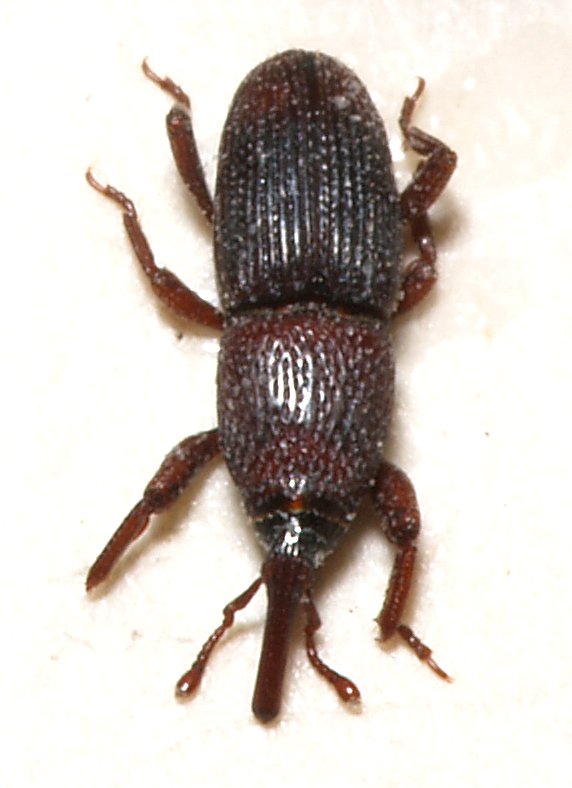- Sitophilus
image_width = 250px
image_caption = "Sitophilus granarius "
regnum =Animal ia
phylum =Arthropod a
classis =Insect a
ordo = Coleoptera
familia =Curculionidae
subfamilia =Dryophthorinae
genus = "Sitophilus"
subdivision_ranks = Species
subdivision = "Sitophilus granarius" (wheat weevil or granary weevil)
"Sitophilus linearis" (tamarind weevil )
"Sitophilus oryzae" (rice weevil )
"Sitophilus vateriae "
"Sitophilus zeamais" (maize weevil )"Sitophilus" is a
cosmopolitan genus ofweevil s found onrice ,maize andtamarind . It has also been found onChickpea .The Rice weevil, "Sitophilus oryzae" damages rice (main), maize and other cereals in storage (alternative).
Da
Life history: Identical to "S. zeamais" so far as is known, but preferably taking place in rice. Eggs are white and oval. The female lays the eggs inside the grain by chewing a minute hole in which each egg is deposited, followed by the sealing of the hole with a secretion. These eggs hatch into tiny grubs which stay and feed inside the grain and are responsible for most of the damage. Mature larvae are plump, legless and white, about 4 mm long. Pupation takes place inside the grain. The adult beetle emerges by biting a circular hole through outer layers of the grain. They are small brown weevils, virtually indistinguishable from each other, about 3.5-4.0 mm long with rostrum and thorax large and conspicuous. The elytra are uniformly dark brown. Each female is capable of laying 300-400 eggs, and the adults live for five to eight months and are capable fliers. The life-cycle is about five weeks at 30oC and 70% RH; optimum conditions for development are 27-31oC and more than 60% RH; below 17oC development ceases.
Distribution: The two species, "Sitophilus oryzae" and "S. zeamais", are virtually cosmopolitan throughout the warmer parts of the world. In Europe they are replaced by the temperate Palaearctic species "S. granarius" which is distinguished by the punctate sculpturing on the prothorax and elytra, and by the fact that it is wingless and hence cannot fly.
Wikimedia Foundation. 2010.


_the_entire_grain_is_usually_destroyed_by_the_time_the_adult_emerges._Pest_status:_A_very_serious_major_(primary)_pest_of_stored_rice_and_other_cereals_in_the_warmer_parts_of_the_world._)